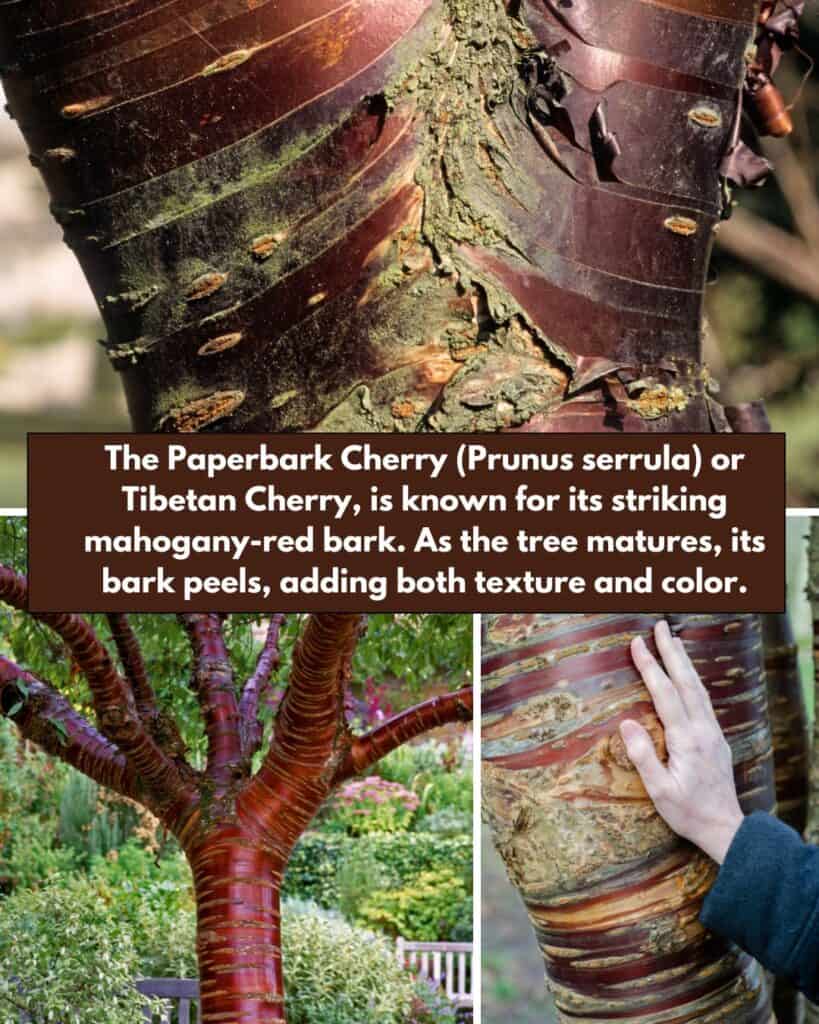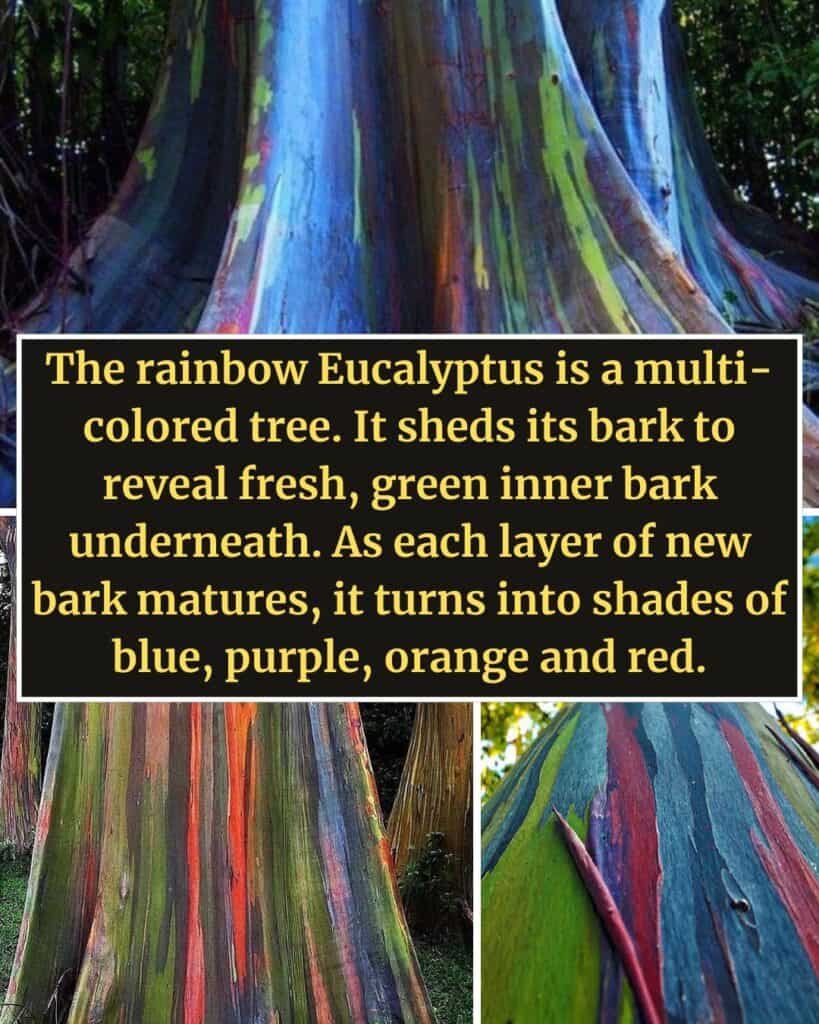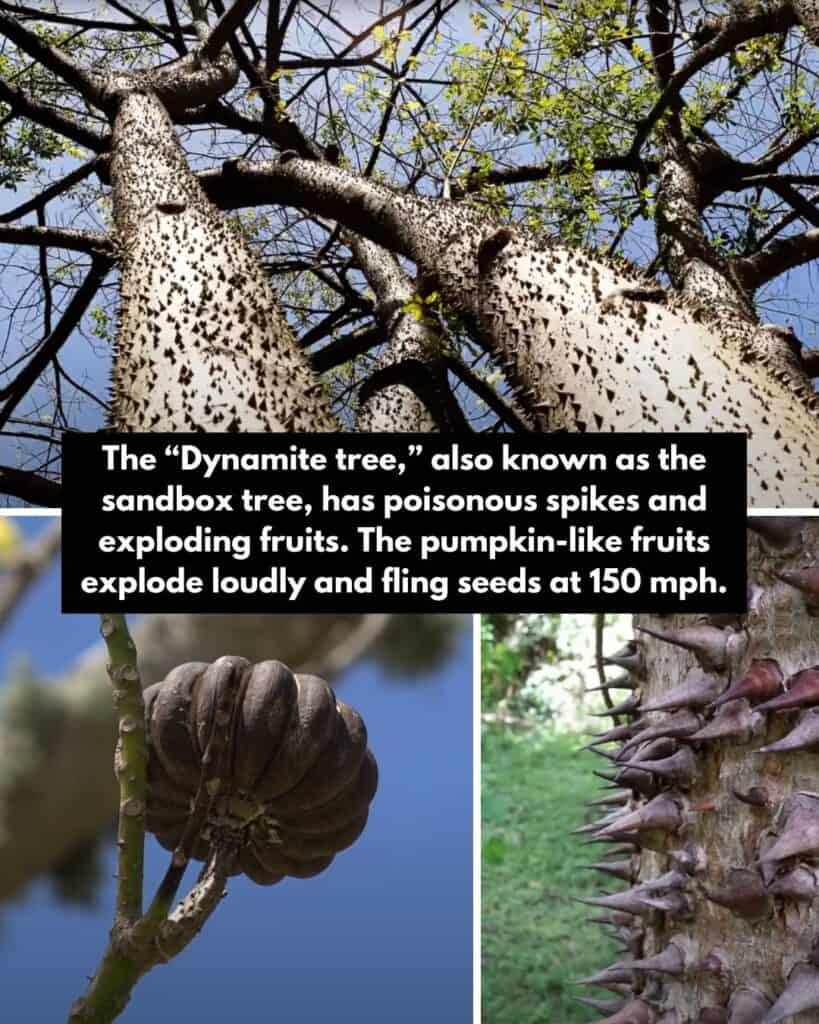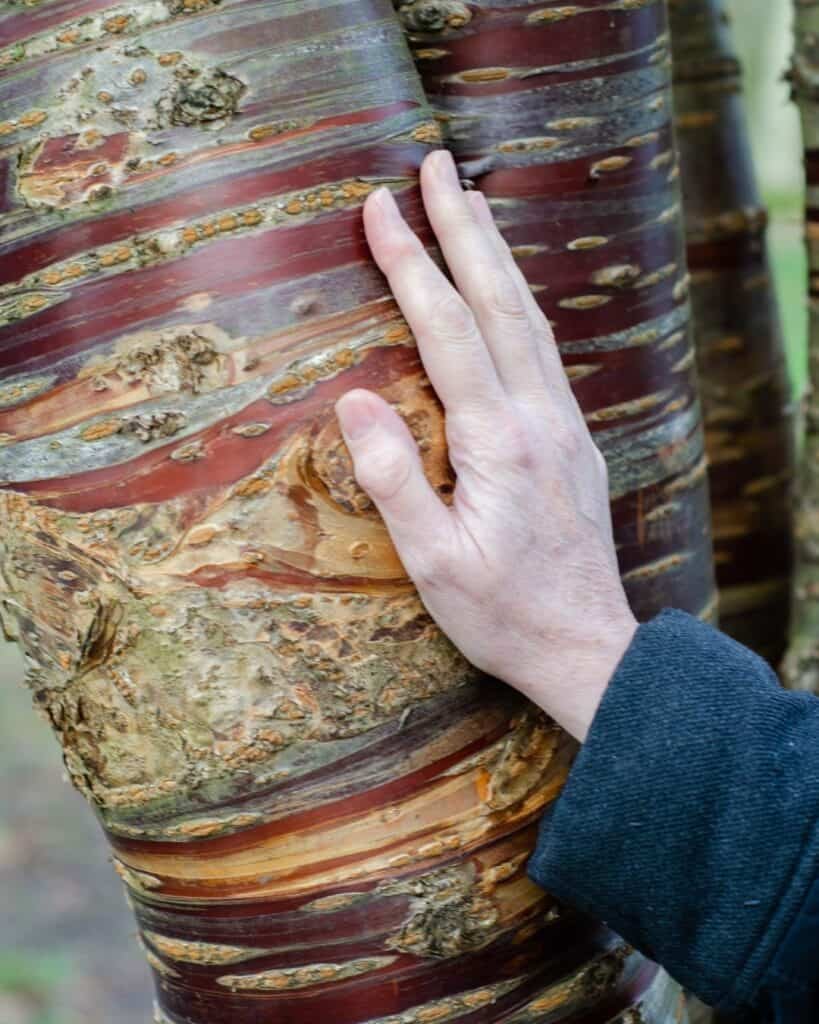Prunus serrula, also known as paperbark cherry or Tibetan cherry, is a beautiful ornamental tree admired for its striking bark. This small deciduous tree stands out in landscapes with its shiny, mahogany-brown bark that peels in thin layers, creating a unique and attractive appearance year-round.
Native to China, the paperbark cherry grows to a height of 20 to 30 feet and features narrow, dark green leaves. The tree’s most striking feature is its exfoliating bark, which adds visual interest to gardens and landscapes, especially during the winter months when the foliage has fallen.
Paperbark cherry thrives in mountainous areas and is perfect for USDA hardiness zones 5-6. In addition to its visual appeal, it also serves as a host for the eastern tiger swallowtail butterfly, contributing to local ecosystems.
Key takeaways
- Prunus serrula is valued for its unique, peeling, mahogany-brown bark.
- The tree grows 20 to 30 feet tall and is well suited to mountainous areas.
- It serves as a larval host for the eastern tiger swallowtail butterfly.
Botanical profile of Prunus Serrula
Prunus serrula is a flamboyant deciduous tree known for its unique bark and ornamental features. This species has distinct characteristics that differentiate it from other cherry trees.
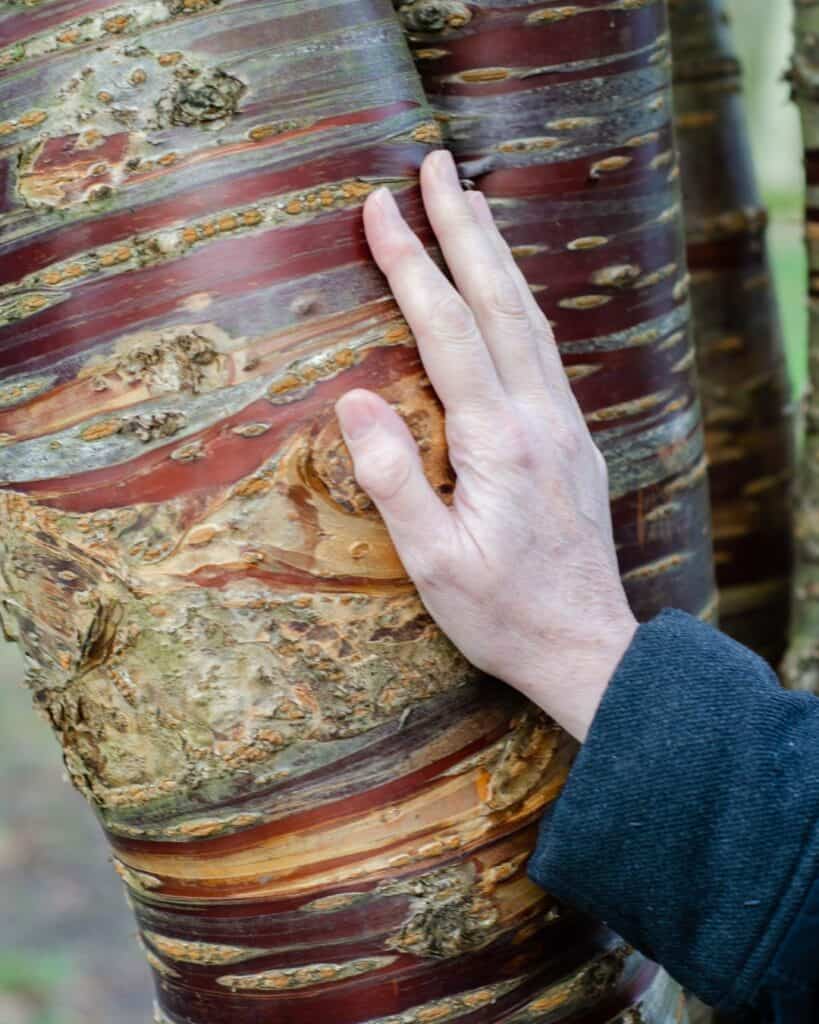

Species classification
Prunus serrula belongs to the Rosaceae family, which includes roses, apples and other fruit plants. It is part of the genus Prunus, which contains cherries, plums and peaches. The tree is native to China, specifically the western regions of Sichuan, Xizang and Yunnan.
Birchbark cherry is one of its common names, along with paperbark cherry and Tibetan cherry. These names reflect their origin and the distinctive appearance of the bark.
Distinctive features
The most notable feature of Prunus serrula is its shiny reddish-brown bark that peels off in horizontal strips, revealing a polished sheen beneath. This gives the tree a unique look, especially in winter when its branches are bare.
Prunus serrula grows up to 20-30 feet with a similar spread. Its leaves are narrow and long, turning yellow in autumn. In spring, the tree produces small white flowers in clusters.
The tree prefers full sun to partial shade and thrives in moist, well-drained soil. It is hardy and can tolerate various types of soil, making it adaptable to different growing conditions.
Cultivation and Care
Proper care is key to growing a healthy Prunus serrula tree. Good planting, watering and pruning practices help the tree thrive and show its best features.
Planting Guidelines
Choose a location with full sun to give partial shade to your Prunus serrula. The tree needs rich, moist soil that drains well. Dig a hole twice as wide as the root ball and just as deep.
Place the tree in the hole and fill it with soil. Water deeply after planting. Add a 2 to 3-inch layer of mulch around the base, keeping it away from the trunk.
Spring or fall are ideal times to plant. Give the tree enough room to grow tall and wide.
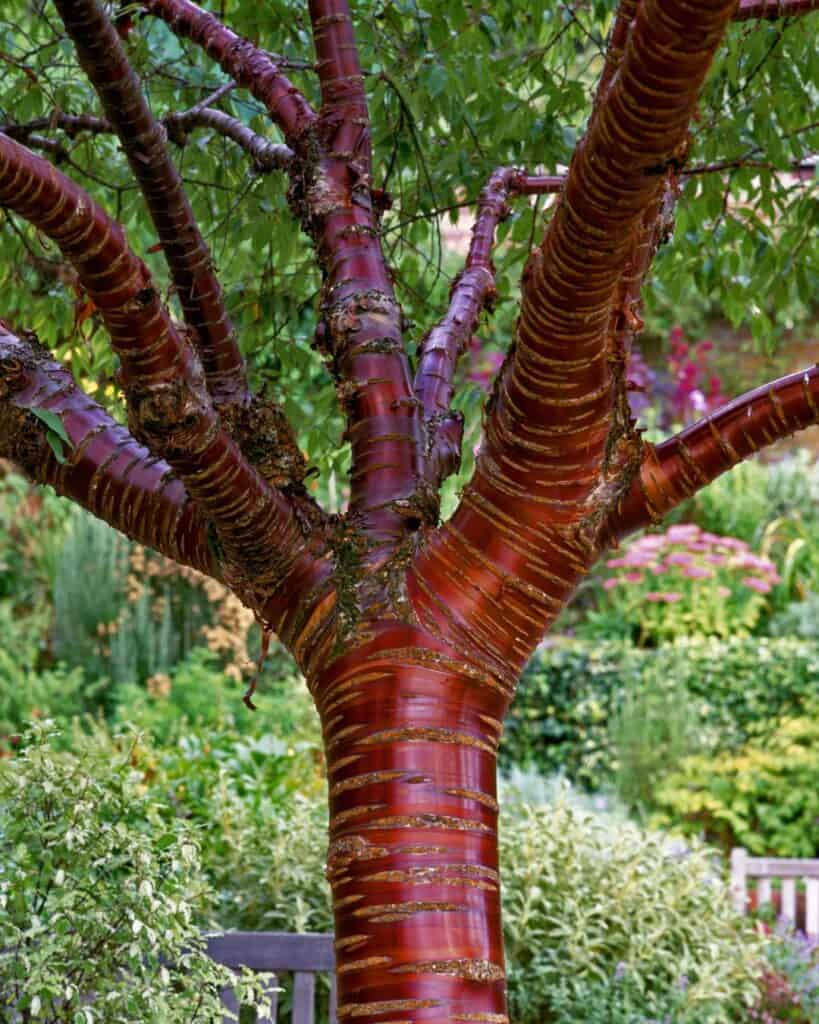

Irrigation and Nutrition
Water young Prunus serrula trees regularly for the first two years. Once established, they need less water, but still like moist soil. Water deeply once a week during dry periods.
Fertilize in early spring with a balanced, slow-release fertilizer. Spread it evenly under the canopy of the tree and water it well.
Watch for yellowing leaves, which may mean the soil is too alkaline. Add a little acid fertilizer if necessary.
Pruning techniques
Prune Prunus serrula in late winter or early spring before new growth begins. Remove dead, damaged or crossing branches first.
Thin some interior branches to improve air flow. This helps prevent diseases. Do not remove more than 25% of live branches in a year.
Prune lower branches as the tree grows to highlight its beautiful bark. This creates a more open shape. Always use clean, sharp pruning tools to make clean cuts.
Ornamental uses
The paperbark cherry tree adds striking visual interest to landscapes all year round. Its best features are its shiny bark and elegant shape.
landscape design
In landscape design, the Tibetan cherry tree shines as a specimen tree in large gardens and grows 20 to 30 feet tall and wide, fitting well into spacious areas.
Plant it where its unique bark can be admired up close, such as near patios or along paths. The tree tolerates various soils and situations.
In spring small white flowers bloom. These are followed by small red fruits that attract birds. The narrow green leaves provide a pretty backdrop for other plants.
For best growth, plant in full sun or partial shade. Rich, moist, well-drained soil is ideal. The tree adapts to different types of soil but prefers constant humidity.
Companion planting
Paperbark cherry blends well with other ornamental plants. Its reddish-brown bark contrasts very well with the evergreen ones.
Good companions include:
- Low growing shrubs
- Ornamental grasses
- spring bulbs
These plants will not compete with the shallow roots of the cherry. They also provide visual interest at different heights.
Consider planting white flowering shrubs nearby to reflect the tree’s spring flowers. Plants with purple leaves offer a striking contrast to their green foliage.
In winter, cherry bark stands out against dark evergreens or white snow. Plant early spring bulbs underneath for more color when the tree blooms.
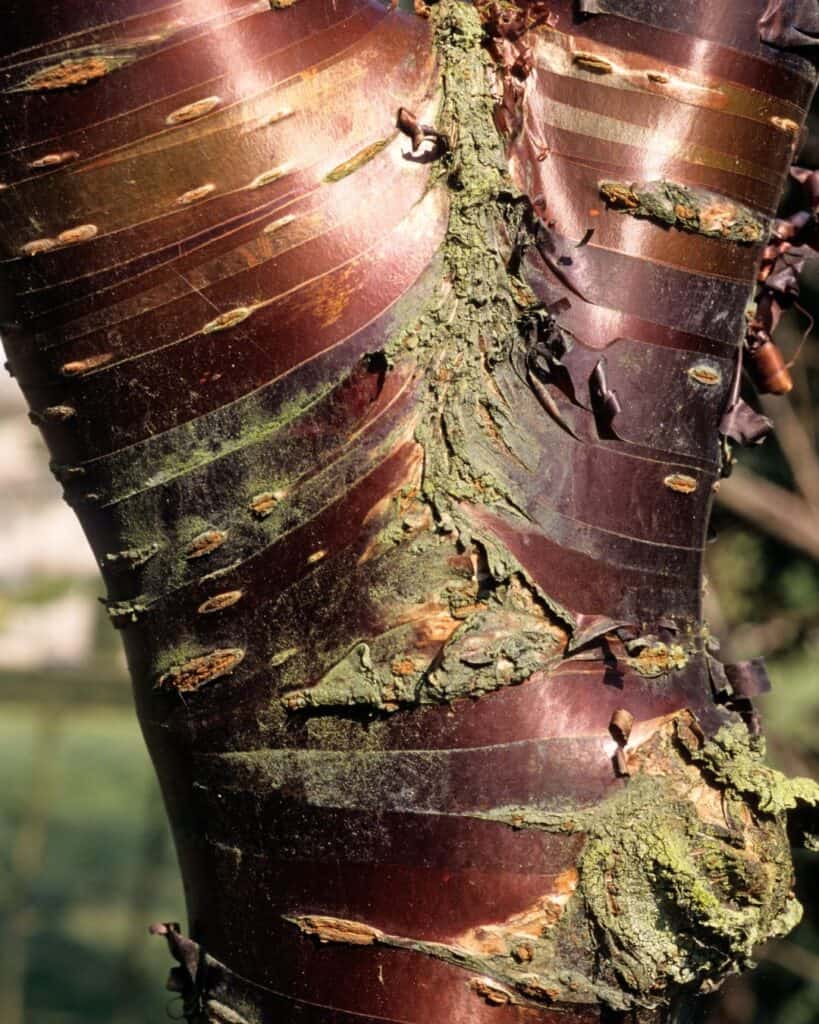

Ecological impact
The Paperbark cherry is vital for supporting biodiversity and adapting to changing climates. It provides food and habitat for wildlife while also showing resilience to various environmental conditions.
Benefits for biodiversity
Prunus serrula serves as a larval host plant for the eastern tiger swallowtail butterfly. This relationship supports butterfly populations, aiding in pollination and ecosystem health.
The tree’s flowers provide nectar to bees and other insects in spring, while its cherries feed birds and small mammals later in the season.
The dense canopy of the Paperbark cherry tree provides nesting sites and shelter for several species of birds. Its bark can harbor insects, which in turn attract insectivorous birds.
In urban environments, this tree contributes to green spaces, creating mini ecosystems within cities. Helps maintain biodiversity in areas where natural habitats are limited.
Climate adaptability
Prunus serrula shows good adaptability to different climates. It thrives in USDA hardiness zones 6-9, tolerating a variety of temperatures and conditions.
The tree is drought resistant once established. This feature makes it suitable for areas experiencing water shortages due to climate change.
Its shiny bark reflects sunlight and helps regulate the temperature around the tree. This feature can help cool urban environments.
The deciduous nature of Paperbark Cherry allows it to conserve energy in winter. It can then begin growing when conditions improve in spring.
Its ability to grow in various types of soil increases its potential for use in reforestation projects. This versatility helps establish green corridors in diverse landscapes.

